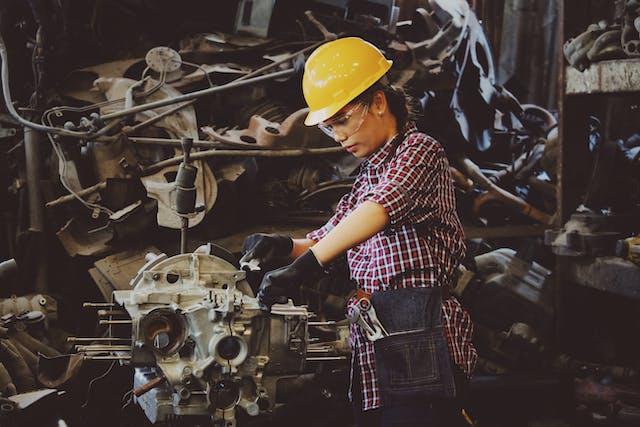
When you consider the myriad of materials defining our modern age, steel consistently emerges as a cornerstone. It's not just a symbol of industrial might but also a practical foundation for much of what we build and use daily.
From the making of towering skyscrapers to everyday household tools, steel is an ally in shaping progress and underpinning economies. This strong, malleable metal product persists as an integral component across various sectors, thanks to its unique combination of durability, flexibility, and recyclability.
Here’s a quick look at why steel is incredibly important to today’s economies and livelihoods, alongside how the industry is poised for growth in the years to come.
The Indispensable Metal: Why Steel Matters
Steel's importance is almost impossible to overstate. It forms the framework of modern construction, undergirds our transportation systems, and is vital in manufacturing.
But beyond the obvious, it plays a critical role in energy production and medical applications—sectors where strength and reliability are non-negotiable.
It's profoundly ingrained in our lives, even when we do not see it directly. Its ubiquitous presence marks the sign of a developed economy. This omnipresence makes it one of the most traded commodities in the world markets.
A Sturdy Past: The Historical Significance of Steel
Delving into the annals of history, steel’s pedigree is as old as civilization itself. Forged in the fires of innovation, it has been a catalyst for monumental moments—from railways that connected continents to skyscrapers almost touching the skies.
It’s hard to imagine, but there was once a time when buildings were no taller than the trees. With steel's introduction, suddenly, cities could sprawl upwards… forever altering our landscapes and capabilities. Decades down the line, the electric steel market is ever-expanding with the world’s growing need for this alloy of iron and carbon.
The very backbone of industrialization, it’s safe to say steel has been a steadfast partner in humankind’s march toward progress.
Examples of How Steel Is Used Today
It's fascinating to see how steel shows up in our day-to-day life. The vehicles we drive, appliances in our homes, and bridges we cross are all reliant on this versatile material.
For instance, a metal shim, a thin piece of steel used for alignment or support, is an unsung hero in numerous applications from automotive to construction.
Here are a quick few examples of industries where steel plays a crucial role:
● In construction: as the main component for frameworks and reinforcements in buildings.
● In transportation: used for the fabrication of cars, trains, ships, and even aerospace engineering.
● In utilities: essential for building infrastructure like water pipes and power towers.
Everywhere you look, there's probably steel involved. With technological advances available to manufacture components necessary for complex machinery and structures, the uses of steel continue to evolve.
Environmental Impacts and Solutions in Steel Manufacturing
The process of creating steel is energy-intensive and historically has had a significant environmental footprint.
Plus, sometimes its production is powered by non-renewable resources like coal, which results in the emission of greenhouse gasses that damage our planet’s protective Ozone layer in the atmosphere.
The result? It contributes to global warming, and the big elephant in our world – Climate Change!
Solutions
● Green Manufacturing: However, the industry is well aware of its impact and is actively seeking greener alternatives. Companies the world over are exploring cleaner energy sources, like electricity generated from renewable sources to power furnaces.
● Reducing Emissions: You can bet or agree, that many are also considering investing in technologies that reduce emissions through more efficient processes.
● Recycling: Additionally, there's a strong push to improve recycling methods to capitalize on steel's infinite recyclability.
In these ways, the sector aims to meet growing demand while mitigating its environmental effects.
Innovations in Steel Production
Speaking of which, innovation drives growth within the steel industry. New methods aim to make production not only cleaner... but also less costly and more efficient.
For example, recent advancements include improving electric arc furnace technology and developing alternative ways to produce steel with less carbon output.
These cutting-edge approaches help manufacturers keep up with changing regulations while producing higher-quality steel products at competitive prices. As such, innovations continue to emerge that promise a robust future for this vital industry.
Conclusion:
In closing, steel remains as crucial as ever, both in supporting our existing infrastructure and enabling future advancements. As the industry evolves, it stands on the brink of a more sustainable and innovative era that promises to further solidify its importance in our world.
Disclaimer: This post was provided by a guest contributor. Coherent Market Insights does not endorse any products or services mentioned unless explicitly stated.





